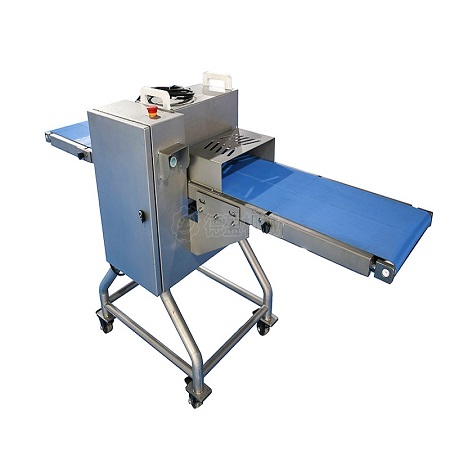Ensuring food safety and quality control in Fresh Meat Slicers is paramount to prevent foodborne illnesses and maintain consumer trust

Here are several key measures and considerations for achieving this
Equipment Maintenance
Regular maintenance and cleaning of Fresh meat slicers are crucial. Blades should be sharpened and sanitized between each use to prevent cross-contamination. Any worn or damaged parts should be promptly repaired or replaced to maintain performance and safety.
Hygiene Practices
Strict hygiene practices must be followed by personnel operating Fresh meat slicers. This includes frequent handwashing, wearing clean gloves, and using sanitized utensils. Additionally, surfaces in contact with meat should be regularly cleaned and sanitized to prevent bacterial growth.
Temperature Control
Proper temperature control is essential for preserving the freshness and safety of sliced meat. Fresh meat slicers should be operated within recommended temperature ranges to prevent bacterial growth and ensure product integrity.
Storage Conditions
After slicing, meat should be promptly stored under refrigeration to maintain freshness and prevent spoilage. Proper packaging techniques, such as vacuum sealing or using airtight containers, can help extend the shelf life of sliced meat while minimizing exposure to contaminants.
Cross-Contamination Prevention
Measures should be implemented to prevent cross-contamination between different types of meat and other food products. This includes using separate slicing equipment for different meats, as well as dedicated workspaces and utensils to minimize the risk of contamination.
Supplier Quality Assurance
Ensuring the quality and safety of the meat being sliced is crucial. Establishing relationships with reputable suppliers who adhere to strict quality control standards can help mitigate risks associated with foodborne pathogens and contaminants.
Regulatory Compliance
Compliance with relevant food safety regulations and standards is mandatory for businesses operating fresh meat slicers. This includes adhering to guidelines set forth by regulatory agencies such as the FDA (Food and Drug Administration) or USDA (United States Department of Agriculture), as well as local health authorities.
Hazard Analysis and Critical Control Points (HACCP)
Implementing a HACCP plan can help identify and mitigate potential hazards associated with fresh meat slicing operations. By systematically assessing risks and implementing control measures, businesses can ensure the safety and quality of their products.
Traceability and Recall Procedures
Establishing robust traceability systems enables businesses to track the source of ingredients and respond quickly in the event of a product recall or foodborne illness outbreak. Clear procedures should be in place to facilitate efficient communication with suppliers, customers, and regulatory agencies in such situations.
By implementing comprehensive food safety and quality control measures, businesses can minimize risks and uphold high standards of safety and quality in fresh meat slicing operations, thereby safeguarding consumer health and confidence.




